Skoda Superb Limousine vs VW Arteon - Differences and prices compared
Costs and Efficiency:
When it comes to price and running costs, the biggest differences usually appear. This is often where you see which car fits your budget better in the long run.
Skoda Superb Limousine has a evident advantage in terms of price – it starts at 34200 £, while the VW Arteon costs 43300 £. That’s a price difference of around 9081 £.
Fuel consumption also shows a difference: Skoda Superb Limousine manages with 0.30 L and is therefore decisively more efficient than the VW Arteon with 5.10 L. The difference is about 4.80 L per 100 km.
Engine and Performance:
Power, torque and acceleration are the classic benchmarks for car enthusiasts – and here, some clear differences start to show.
When it comes to engine power, the VW Arteon has a to a small extent edge – offering 320 HP compared to 265 HP. That’s roughly 55 HP more horsepower.
In acceleration from 0 to 100 km/h, the VW Arteon is a bit quicker – completing the sprint in 4.90 s, while the Skoda Superb Limousine takes 5.60 s. That’s about 0.70 s faster.
In terms of top speed, the performs better – reaching , while the tops out at . The difference is around .
There’s also a difference in torque: VW Arteon pulls minimal stronger with 420 Nm compared to 400 Nm. That’s about 20 Nm difference.
Space and Everyday Use:
Whether family car or daily driver – which one offers more room, flexibility and comfort?
Seats: offers more seating capacity – vs .
In curb weight, Skoda Superb Limousine is minimal lighter – 1559 kg compared to 1607 kg. The difference is around 48 kg.
In terms of boot space, the Skoda Superb Limousine offers slight more room – 645 L compared to 590 L. That’s a difference of about 55 L.
In maximum load capacity, the Skoda Superb Limousine performs minimal better – up to 1795 L, which is about 163 L more than the VW Arteon.
When it comes to payload, Skoda Superb Limousine slight takes the win – 580 kg compared to 569 kg. That’s a difference of about 11 kg.
Who wins the race?
The Skoda Superb Limousine proves to be dominates this comparison and therefore becomes our DriveDuel Champion!
Skoda Superb Limousine is the better all-rounder in this comparison.
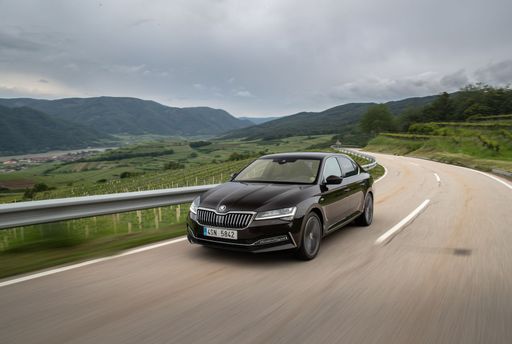 @ Škoda Auto a.s. / Škoda Storyboard
@ Škoda Auto a.s. / Škoda Storyboard
Skoda Superb Limousine
Costs and Consumption
View detailed analysis
Engine and Performance
View detailed analysis
Dimensions and Body
View detailed analysis
Skoda Superb Limousine
The Skoda Superb is the quietly imposing saloon that turns everyday practicality into tasteful luxury, with a roomy, well-thought-out cabin and a boot that swallows groceries and luggage with military discipline. For buyers who want executive presence without the badge snobbery, it’s a clever, polished choice that rewards sensible thinking with genuine comfort and pragmatic charm.
details @ Škoda Auto a.s. / Škoda Storyboard
@ Škoda Auto a.s. / Škoda Storyboard
 @ Škoda Auto a.s. / Škoda Storyboard
@ Škoda Auto a.s. / Škoda Storyboard
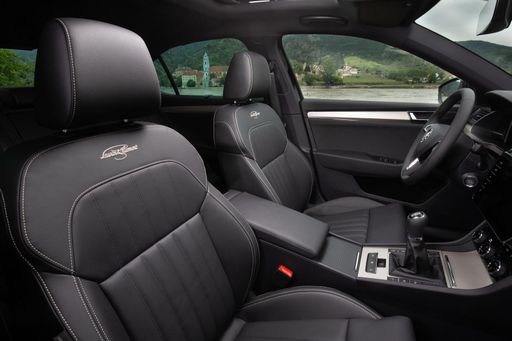 @ Škoda Auto a.s. / Škoda Storyboard
@ Škoda Auto a.s. / Škoda Storyboard
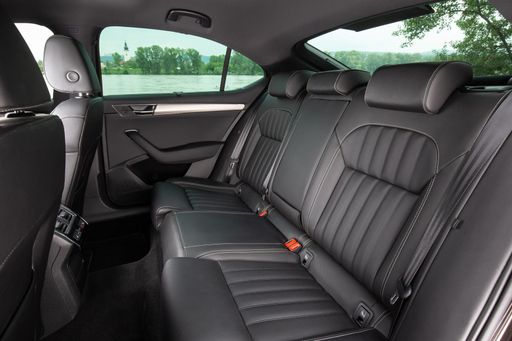 @ Škoda Auto a.s. / Škoda Storyboard
@ Škoda Auto a.s. / Škoda Storyboard
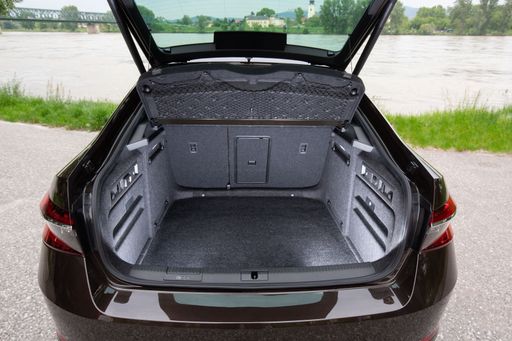 @ Škoda Auto a.s. / Škoda Storyboard
@ Škoda Auto a.s. / Škoda Storyboard
VW Arteon
The VW Arteon cuts a fastback silhouette that manages to look more expensive than it is, with a cabin that feels calm, roomy and smartly finished. It blends relaxed long distance comfort with a touch of sporting poise, making it a clever choice for buyers who want grand touring polish without shouting for attention.
details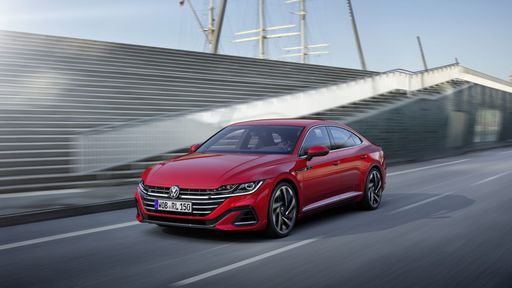 @ Volkswagen AG / VW Media
@ Volkswagen AG / VW Media
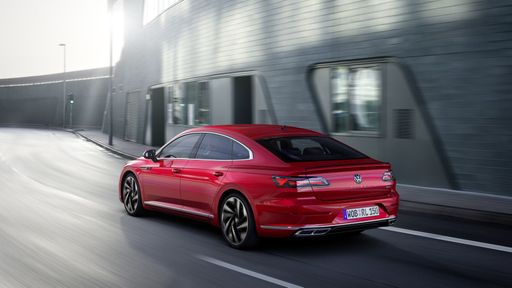 @ Volkswagen AG / VW Media
@ Volkswagen AG / VW Media
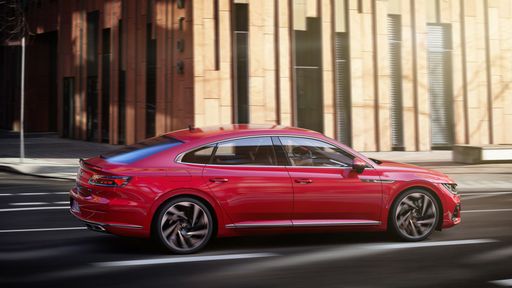 @ Volkswagen AG / VW Media
@ Volkswagen AG / VW Media
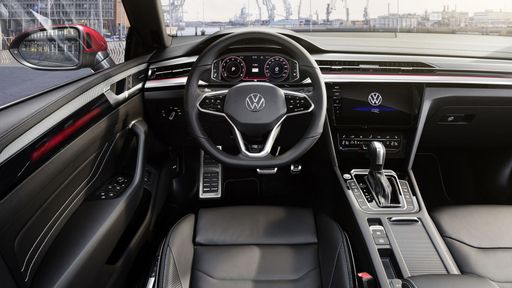 @ Volkswagen AG / VW Media
@ Volkswagen AG / VW Media
 @ Škoda Auto a.s. / Škoda Storyboard
@ Škoda Auto a.s. / Škoda Storyboard
|
 @ Volkswagen AG / VW Media
@ Volkswagen AG / VW Media
|
|
|
|
Costs and Consumption |
|
|---|---|
|
Price
34200 - 50500 £
|
Price
43300 - 60800 £
|
|
Consumption L/100km
0.3 - 7.7 L
|
Consumption L/100km
5.1 - 8.6 L
|
|
Consumption kWh/100km
-
|
Consumption kWh/100km
-
|
|
Electric Range
128 - 137 km
|
Electric Range
-
|
|
Battery Capacity
19.70 kWh
|
Battery Capacity
-
|
|
co2
8 - 175 g/km
|
co2
133 - 195 g/km
|
|
Fuel tank capacity
45 - 66 L
|
Fuel tank capacity
66 L
|
Dimensions and Body |
|
|---|---|
|
Body Type
Sedan
|
Body Type
Estate
|
|
Seats
5
|
Seats
5
|
|
Doors
5
|
Doors
5
|
|
Curb weight
1559 - 1734 kg
|
Curb weight
1607 - 1773 kg
|
|
Trunk capacity
486 - 645 L
|
Trunk capacity
590 L
|
|
Length
4912 mm
|
Length
4866 mm
|
|
Width
1849 mm
|
Width
1871 mm
|
|
Height
1481 mm
|
Height
1434 - 1451 mm
|
|
Max trunk capacity
1635 - 1795 L
|
Max trunk capacity
1632 L
|
|
Payload
539 - 580 kg
|
Payload
467 - 569 kg
|
Engine and Performance |
|
|---|---|
|
Engine Type
Petrol, Plugin Hybrid, Petrol MHEV, Diesel
|
Engine Type
Diesel, Petrol
|
|
Transmission
Automatic
|
Transmission
Automatic
|
|
Transmission Detail
Dual-Clutch Automatic
|
Transmission Detail
Dual-Clutch Automatic
|
|
Drive Type
Front-Wheel Drive, All-Wheel Drive
|
Drive Type
Front-Wheel Drive, All-Wheel Drive
|
|
Power HP
150 - 265 HP
|
Power HP
150 - 320 HP
|
|
Acceleration 0-100km/h
5.6 - 9.2 s
|
Acceleration 0-100km/h
4.9 - 9.4 s
|
|
Max Speed
220 - 250 km/h
|
Max Speed
216 - 250 km/h
|
|
Torque
250 - 400 Nm
|
Torque
320 - 420 Nm
|
|
Number of Cylinders
4
|
Number of Cylinders
4
|
|
Power kW
110 - 195 kW
|
Power kW
110 - 235 kW
|
|
Engine capacity
1498 - 1984 cm3
|
Engine capacity
1968 - 1984 cm3
|
General |
|
|---|---|
|
Model Year
2024 - 2025
|
Model Year
2024
|
|
CO2 Efficiency Class
E, B, D, F
|
CO2 Efficiency Class
D, E, F, G
|
|
Brand
Skoda
|
Brand
VW
|
What drive types are available for the Skoda Superb Limousine?
The Skoda Superb Limousine is offered with Front-Wheel Drive or All-Wheel Drive.
The prices and data displayed are estimates based on German list prices and may vary by country. This information is not legally binding.
